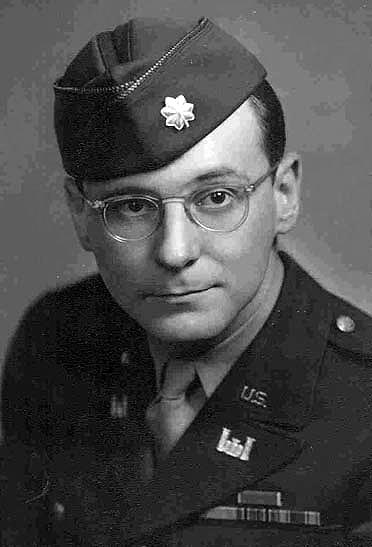The Atomic Heritage Foundation is pleased to announce five new oral histories on our “Voices of the Manhattan Project” website. These special interviews were conducted by the AHF when it was founded in 2002 and include memorable accounts from Thomas O. Jones, Norman Brown, Harold Hasenfus, Ted Rockwell, and William Spindel.
During the Manhattan Project, Thomas O. Jones worked as a counter-intelligence officer and oversaw security for many of the project’s sites. Later, Jones became an intelligence officer at Los Alamos where his role was “to see that whatever happened, nobody noticed.” He provided security for the Trinity Test and “had people circled around the test site as far down as El Paso and Amarillo, Texas” to ensure that things went “smoothly” and ordinary citizens did not report anything unusual.
Norman Brown was also at Los Alamos during the Manhattan Project as a member of the Special Engineer Detachment (SED). Brown worked in D-Building and “purified all the plutonium that went in the Nagasaki bomb.” He received shipments of plutonium from Hanford in tiny one-liter flasks filled with a dark brown liquid and kept a record of every shipment that came in and the amount of plutonium in the sample on a sheet that he had made. Since security clearances in the SED were determined by “whether or not you had a Bachelor’s degree,” Brown did not receive a secret clearance (he was a sophomore at MIT when he was drafted by the army in 1943). So, once Brown stamped the sheet “Secret,” “I could not look at this sheet that I had just filled out.”
Harold Hasenfus was also a member of the SED, but he spent his Manhattan Project days working at the University of Chicago’s Metallurgical Laboratory and in Oak Ridge. In Chicago, Hasenfus worked at a pilot plant that was constructed to assist in the design of the B Reactor in Hanford for the production of plutonium. At Oak Ridge, he helped construct the immense gaseous diffusion plant for the separation of uranium. Hasenfus attributes the success of the Manhattan Project to General Groves, whom he described as a “tremendously dynamic individual.”
Also at Oak Ridge was Ted Rockwell, a member of the “Process Improvement Team” that was tasked with monitoring and fixing problems at various plants across the site. Rockwell described the secret city as “a tremendous sociological experiment” where “kids who had never used any indoor plumbing and sons of Nobel laureates all went to school together.” After the Manhattan Project, Rockwell joined Captain Hyman Rickover to build the world’s first nuclear-powered submarine.
William Spindel also spent time at Oak Ridge before being transferred to Los Alamos to help make special coatings for the implosion bomb. Spindel witnessed the results of his work during the Trinity Test, which he described as “the most intimidating minute of my life.” He also knew David Greenglass, a machinist at Los Alamos who divulged classified information about the atomic bomb to the Soviets. At one point, Greenglass “tried to get me to serve as a spy.” Thankfully, Spindel declined.
We hope you enjoy these new interviews!





